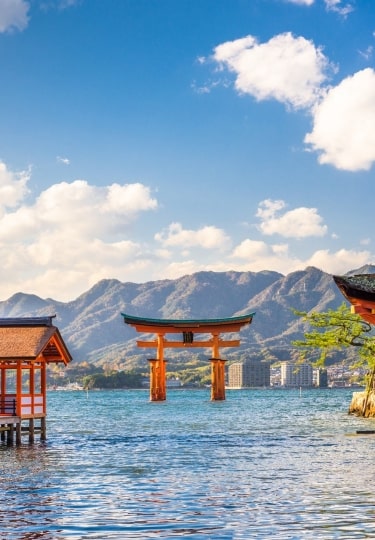Japan is a country where art and beauty are everywhere and on every scale, from a delicate piece of sushi to an ancient temple, handmade from wood.
Some of the most beautiful places in Japan range from natural landmarks like white sand beaches to snow-capped mountains, bamboo forests, and shimmering lakes dotted with islands. Then there’s Japan’s man-made beauty; exquisite shrines, intricate temples and majestic castles, not to mention the sleek, glass towers of ultra-modern cities.
Whatever your own idea of beauty, you will uncover more exquisite finds on every scale as you explore this incredible country in greater depth.
Here are some of the most beautiful places in Japan to visit.
Sensoji Temple, Tokyo
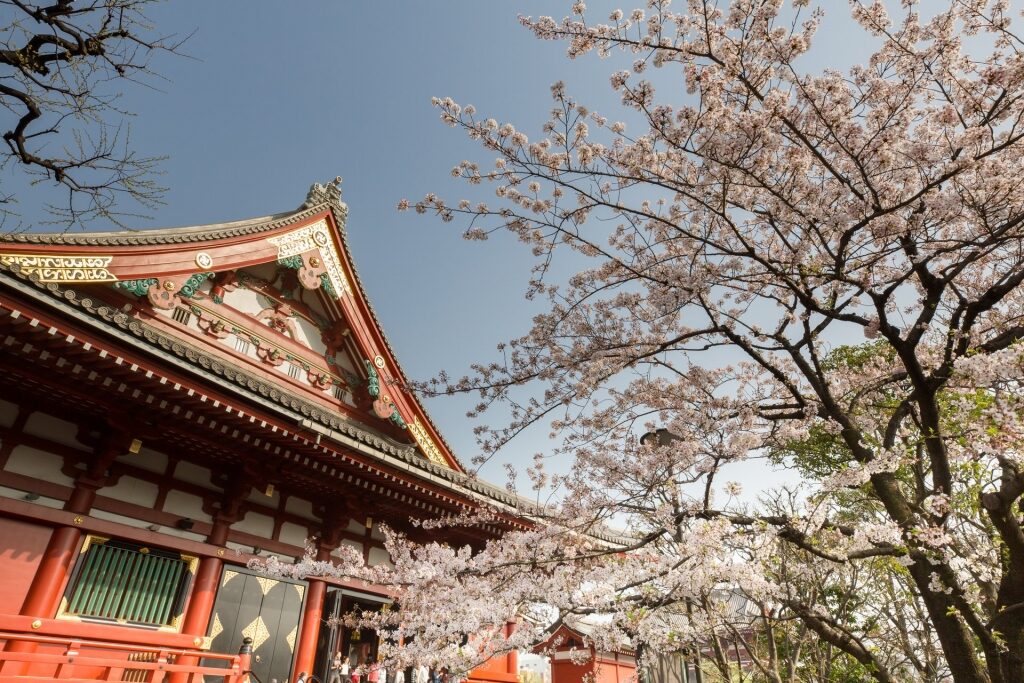
Sensoji Temple, Tokyo
The oldest temple in Tokyo dates to 645 AD and its red pillars and five-story pagoda are a must-see for visitors. The approach street of Nakamise-dori once specialized in temple offerings but is now a paradise for souvenir hunters.
Bathe yourself in incense at the Hozomon Gate, have your fortune told at an omikuji stall, or just enjoy the tranquility inside the temple grounds.
At night, the contrasting view of the river of strikingly modern Tokyo Skytree is a photographer’s dream.
Imperial Palace, Tokyo
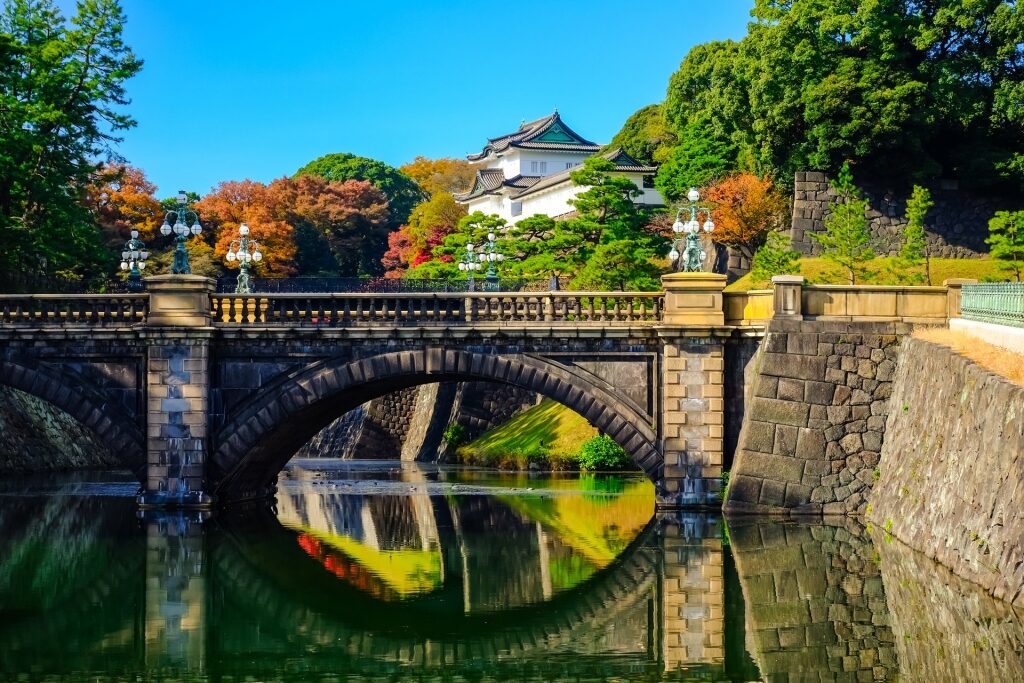
Imperial Palace, Tokyo
This palace, heavily fortified behind its moat and massive walls, has been the home of the Imperial Family since Japan moved its capital from Kyoto in 1868. Bombed during World War Two, it has since been completely rebuilt.
The vast grounds hold mature trees and extensive gardens in Tokyo, popular with city dwellers for walks, jogging and picnics. They are at their prettiest during sakura (cherry blossom) season, when the colors reflect on the still waters of the moat.
Read: The Ultimate Guide to Tokyo’s Neighborhoods & Districts
Sankeien Garden, Yokohama
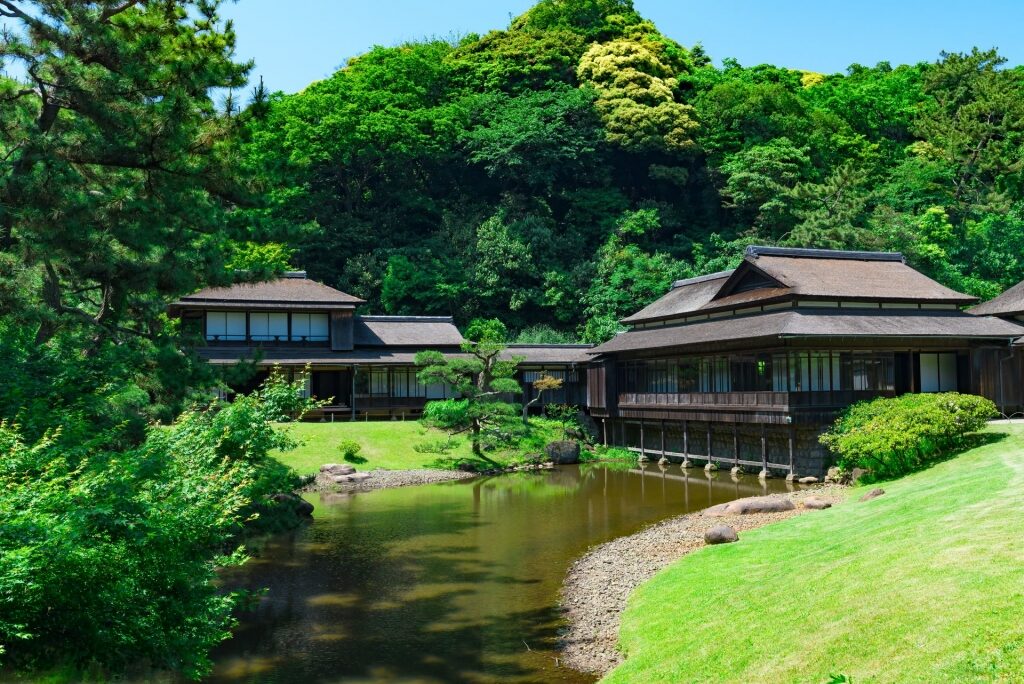
Sankeien Garden, Yokohama
A three-story pagoda is the centerpiece of this wonderful traditional Japanese garden. Winding paths lead you past buildings, waterfalls, ponds, bridges and splendid trees spread over 42 acres.
Historic buildings moved here from all over Japan add to the atmosphere. These include a tea house, authentic traditional farmhouse and a feudal lord’s house.
Add in the smells of the flowers and sounds of birds and you have an incredible multisensory experience.
Oyama Rice Terraces, Kamogawa
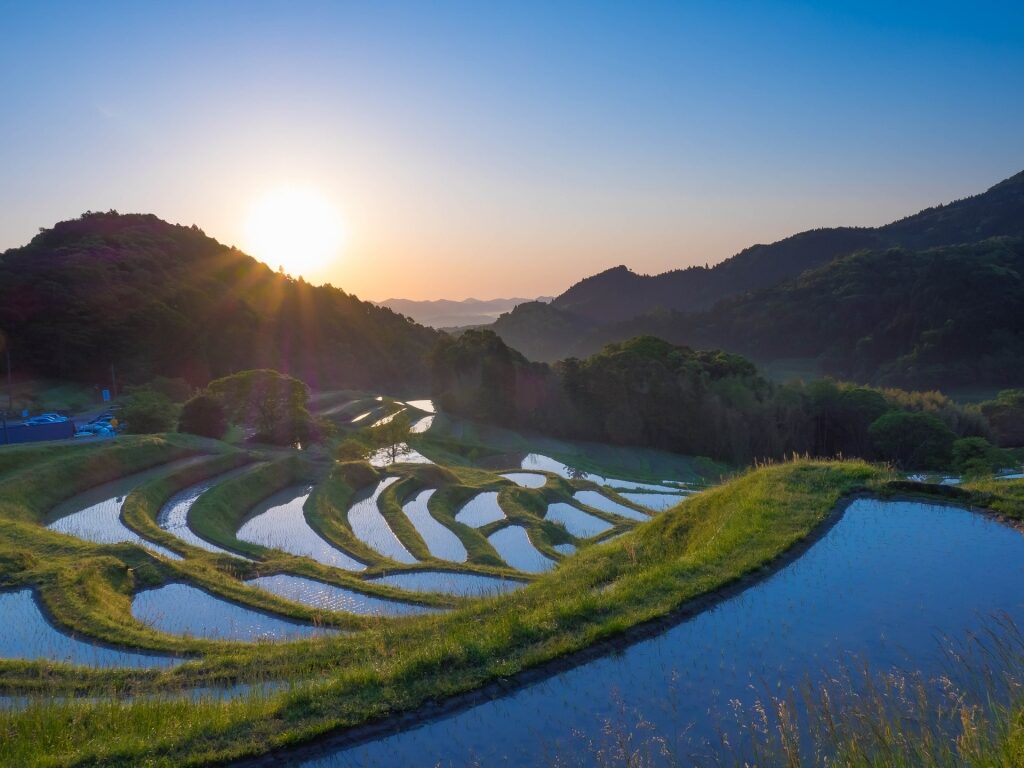
Oyama Rice Terraces, Kamogawa
The closest rice terraces to Tokyo are only a 90-minute drive—and a whole way of life—away from the busy capital. The local population is deeply immersed in preserving this ancient landscape, the result of generations of back-breaking work.
The hundreds of fields flow up and down a slope of the Mineoka Mountains in a picturesque rural setting. Irrigated only with rainwater, these terraces are unique in Japan and offer one of the best sunsets in the world.
Shibuya Crossing, Tokyo
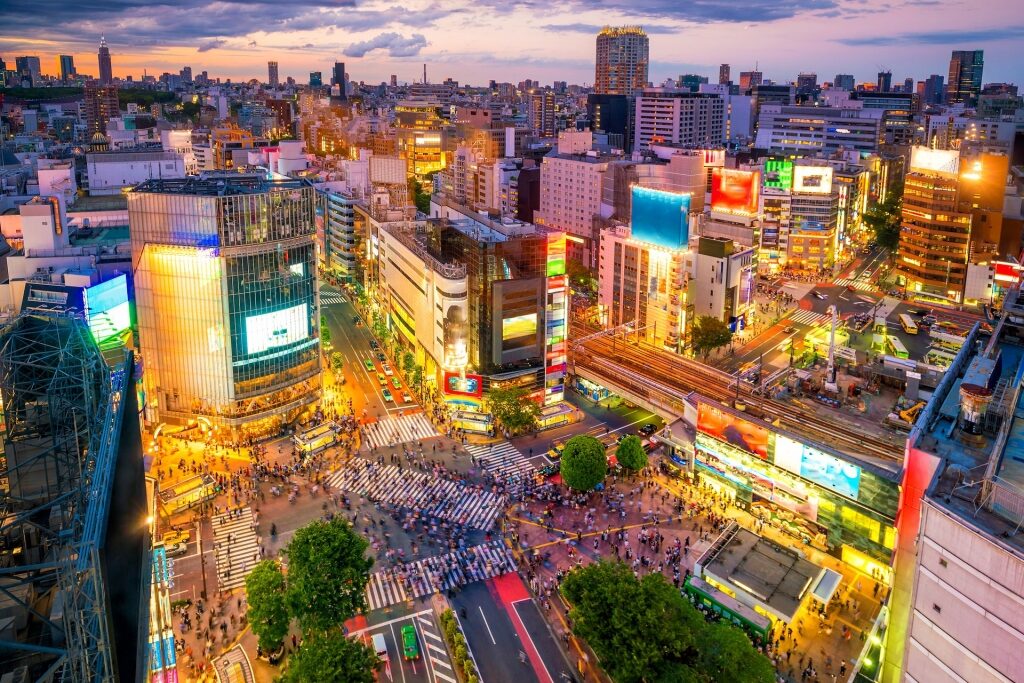
Shibuya Crossing, Tokyo
One of the most familiar sights in Japan, if not the world, Shibuya has an urban beauty all of its own. Sitting in a canyon of neon-lit skyscrapers, it is crossed by a seemingly endless stream of humanity.
If contemplating beauty has a philosophical side, then watching this ebb and flow of workers and visitors is certainly the place to indulge it. Where are they all coming from? Where are they all going?
Watch for a while, then join in yourself. It’s an unforgettable experience.
Gion Geisha District, Kyoto
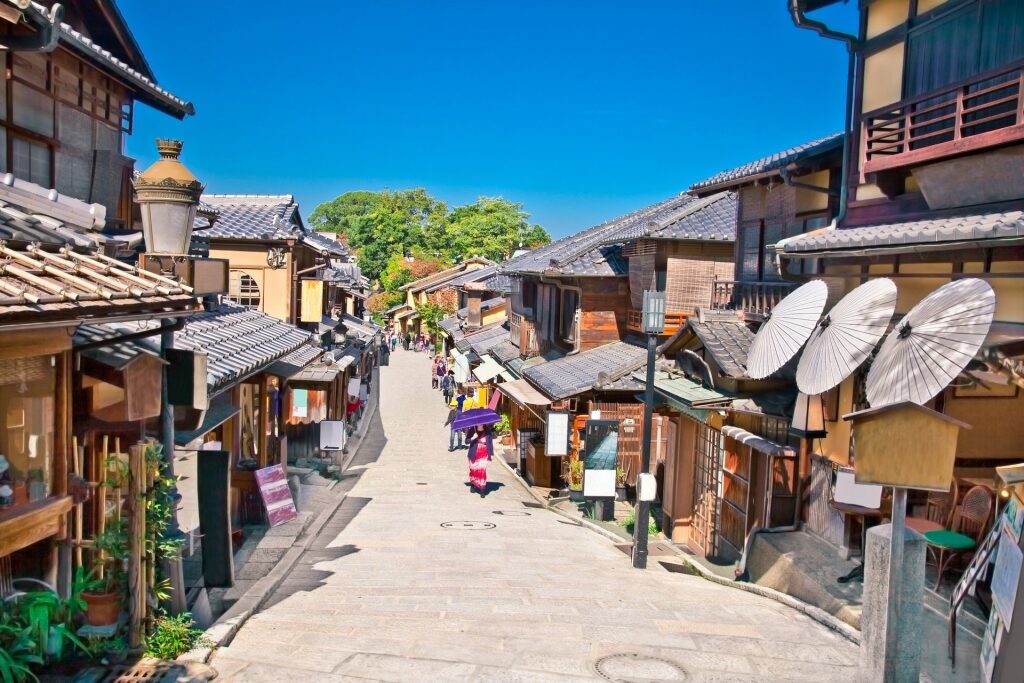
Gion Geisha District, Kyoto
This tiny area of Kyoto, between the Yasaka Shrine and Kenninji Temple, is preserved as a precious part of the city’s past. Its historic buildings include the Ichiriki Ochaya tea house, where the famous 47 Ronin met in 1701.
There are other wooden tea houses and a few shops still specializing in traditional geisha clothing and accessories. You may even be lucky enough to see a geisha, known as geiko here, passing by. These professional entertainers are highly trained in Japanese arts, including music and dance, and typically host dinners in the tea houses.
Nara Park, Kyoto
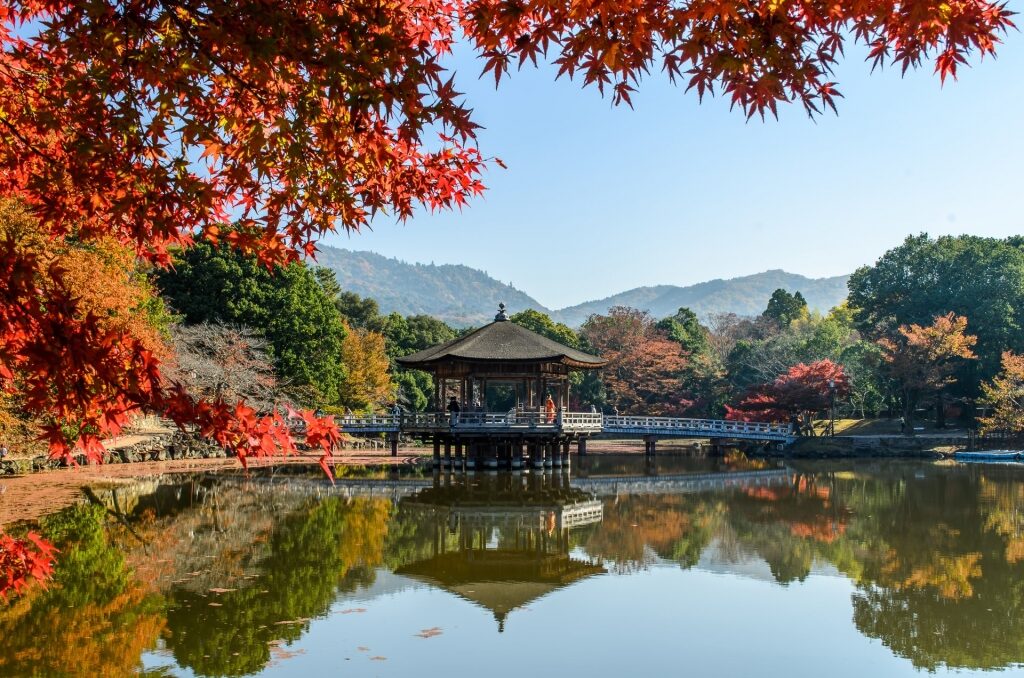
Nara Park, Kyoto
There are few places in Japan where it’s easy to spot wildlife, which makes the deer in Nara Park very special. The herd of 1,400 is tame enough to eat the “shika senbei” or (deer crackers) visitors are encouraged to buy.
The pretty tree-filled park covers eight acres and holds several historic buildings, including the Todaiji Temple. This has one of the world’s largest wooden buildings and one of the largest statues of Buddha.
Read: Two Days in Kyoto
Kiyomizu-dera, Kyoto
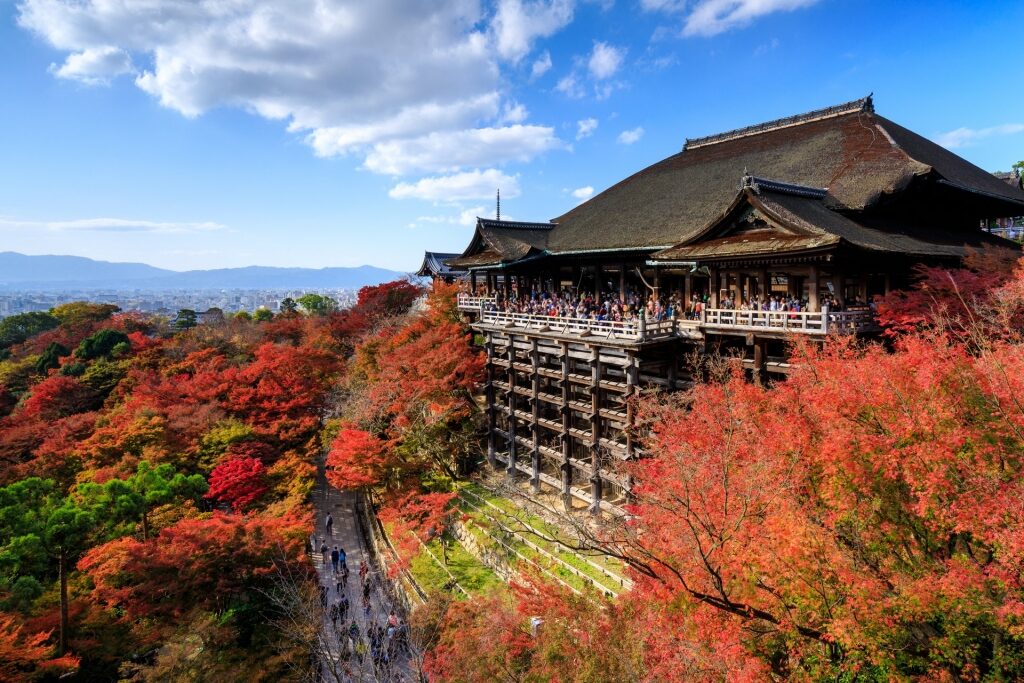
Kiyomizu-dera, Kyoto
The views over Kyoto from this mountaintop temple are spectacular, making it one of the most famous landmarks in Japan. They complement the building itself, whose massive wooden viewing terrace is constructed without nails.
The temple has several buildings, the most famous of which is the Jishu Shrine where those looking for love can pray to find it. Above it is Okunoin Temple, which also has great views of the city.
At Otowa Waterfall, you can drink from one of three streams: one for love, one for academic success and the third for health. Unfortunately, you can only choose one.
Fushimi-inari Taisha, Kyoto
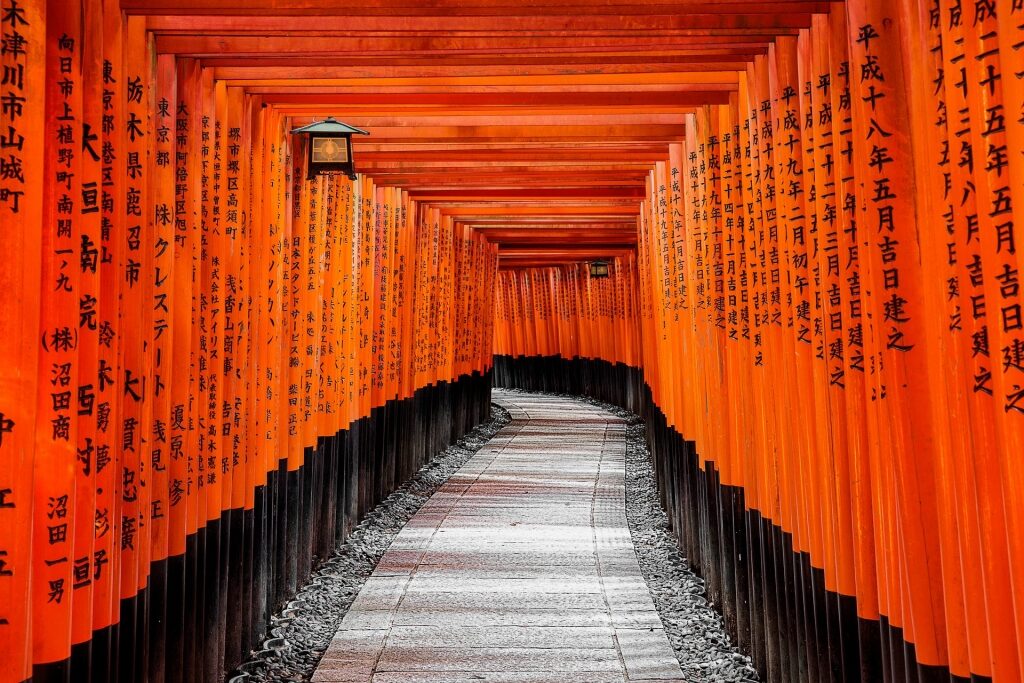
Fushimi-inari Taisha, Kyoto
The many scarlet gates of this Shinto shrine may be familiar to you from countless photos, posters and movies. They lead you up Mt. Inari, passing many stone statues of a white fox.
The fox is seen as a messenger of the god Inari to whom this eighth century shrine is dedicated. One of many hundreds of gods in Shintoism, Inari brings a good harvest and, latterly, success in business.
Many businesses donate torii (“bird perch”) gates to the temple for luck. Some 10,000 such gates now add to the epic appearance of the shrine.
Arashiyama, Kyoto
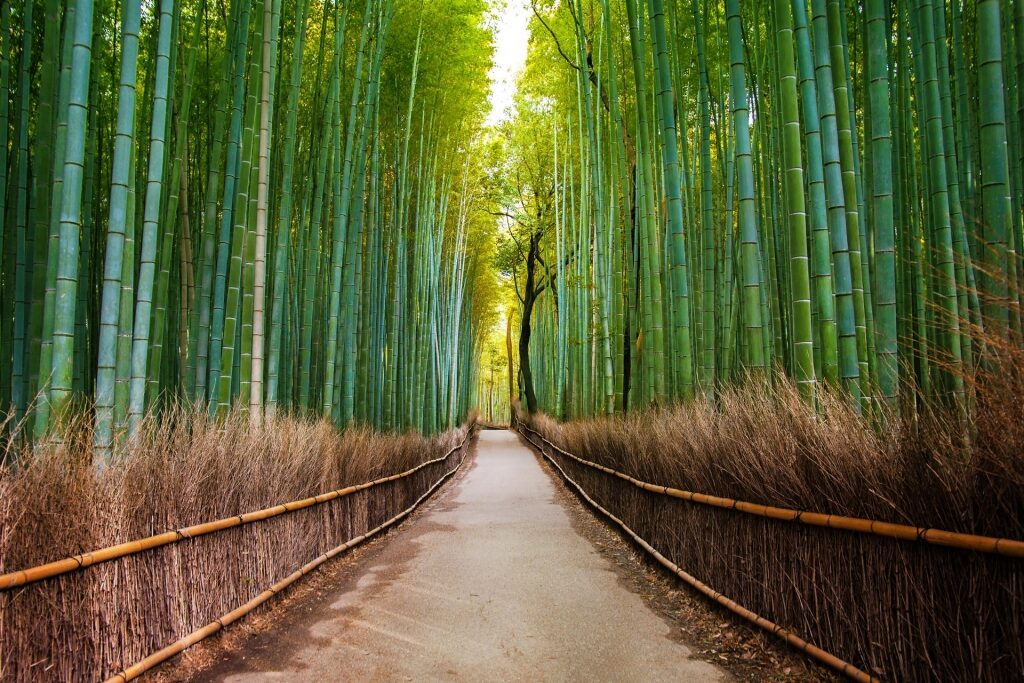
Arashiyama, Kyoto
The spectacular wooden Togetsukyo (“Moon Crossing Bridge”) spanning Hozugawa River is the perfect man-made addition to the natural wonders of Arashiyama. Japanese poets have written about the beauty of this region for centuries.
The area was designated a Place of Scenic Beauty by the Japanese government. It holds such sights as Tenryuji Temple, itself a Unesco World Heritage Site, with a lovely Japanese garden.
The highlight of Arashiyama is the massive bamboo forest behind the temple, regarded as one of the most beautiful places in Japan. This tranquil grove is best seen on a day when the wind sways the treetops; watching and listening in the green half-light is almost hypnotic.
Oshino Hakkai, Shimizu
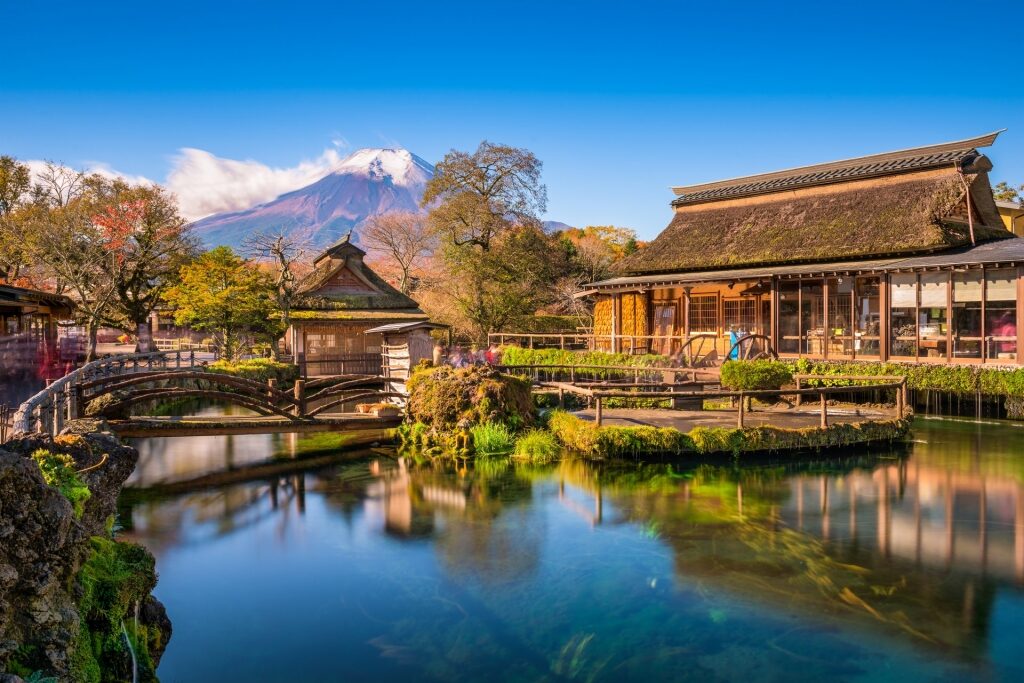
Oshino Hakkai, Shimizu
Walking around Oshino’s eight ponds (Hakkai means “Eight Seas”) offers one of the prettiest places to enjoy views of beautiful Mt. Fuji, 12,388 feet above sea level and almost perfectly conical in shape. Most of the ponds are filled with water from the snow-topped summit itself, filtered through the volcanic rock.
Eight is a significant number in Buddhism, and this circuit of the ponds was once a ritual before making a pilgrimage up the sacred mountain, which is a challenging climb. Although most popular, in winter, when snow adds to the charms of the landscape, it is pretty all year round.
Lake Ashi, Shimizu
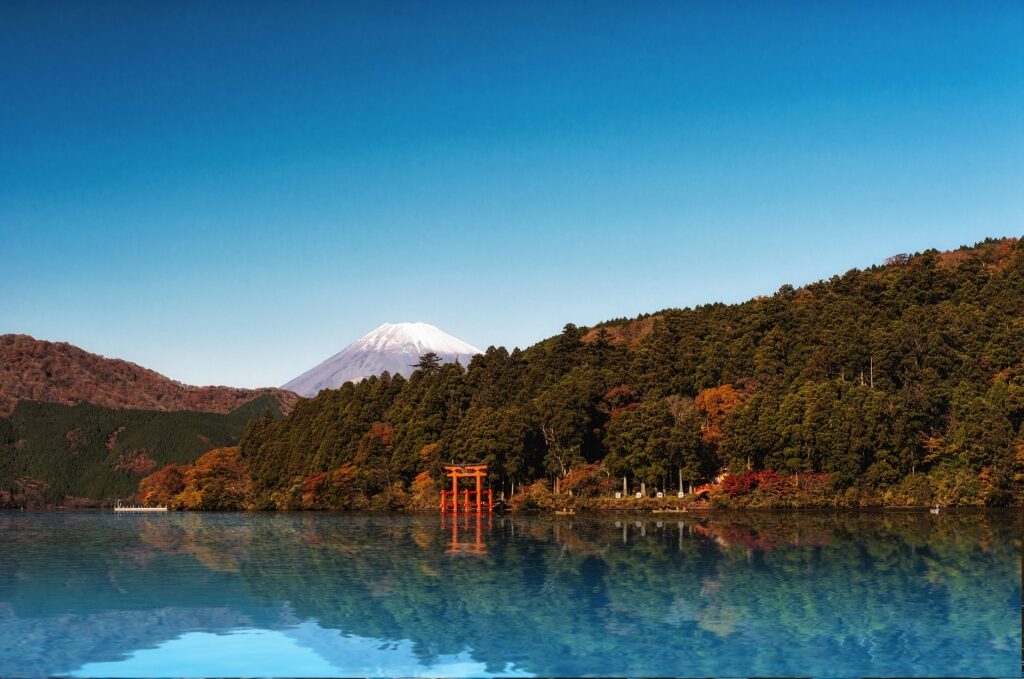
Lake Ashi, Shimizu
Enjoy double views of Mt. Fuji at this tranquil lake: one of the iconic mountain itself and one of its reflection in the clear waters. A boat cruise along the forested shores is the perfect way to take in the amazing scenery and learn about the region.
This area was the site of a summer palace for the Japanese Imperial Family. Although the palace has now gone, the beauty of the lake remains.
Standing in the lake is the graceful Hakone Shrine, one of the most beautiful torii gates in Japan. A splash of scarlet against the dark green forest, the snowy peak of Mt. Fuji as a backdrop against deep blue sky, the gate completes one of the most beautiful photographs of Japan you’ll take.
Onuma National Park, Hakodate
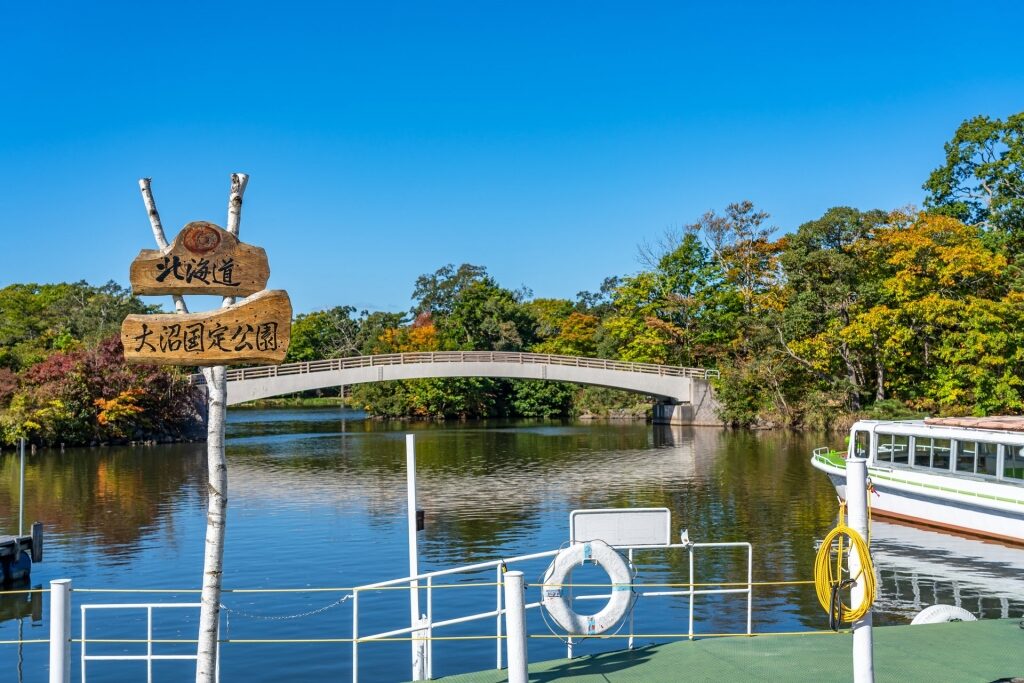
Onuma National Park, Hakodate
At the center of this park in Hakodate is Lake Onuma, dotted with 26 small islands. Bridges connect many of the islands, allowing visitors to enjoy the birdsong and scenery on a lovely one-hour walk.
The park also includes both Konuma and Junsainuma lakes as well as the brooding peak of Mt. Komagatake, an active volcano. Topped by a shrine, the mountain is reached by a ropeway, or aerial tram, and offers spectacular views.
You can cycle, ride on horseback or hike through the park, while snowshoeing and ice fishing are popular in winter.
Goryokaku Fort, Hakodate
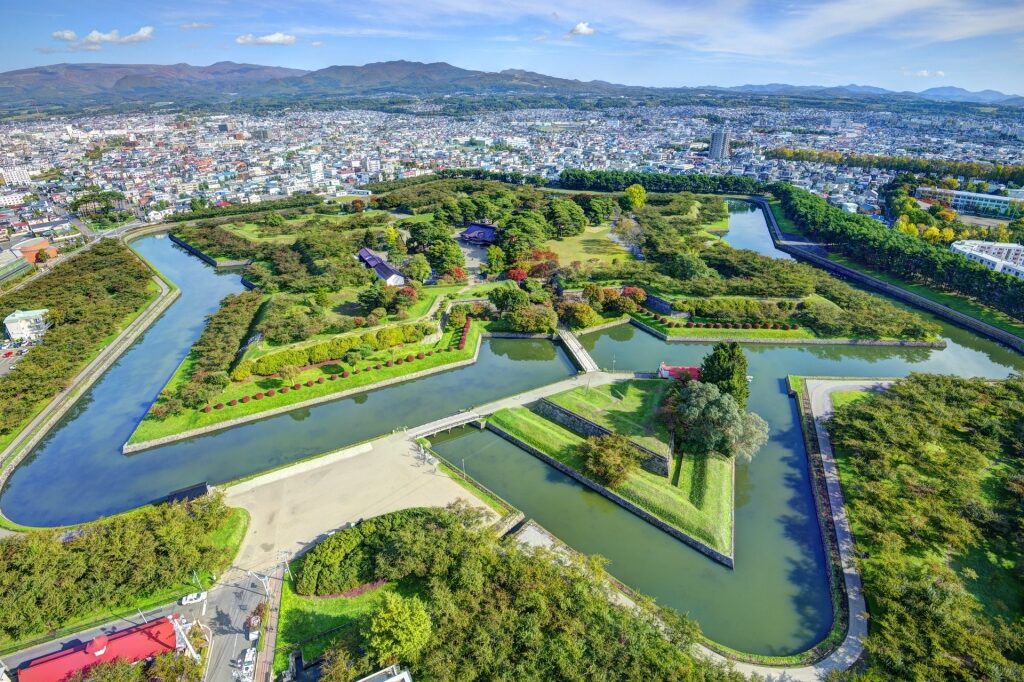
Goryokaku Fort, Hakodate
This dramatic, Napoleonic-style star-shaped fort is where the feudal shogunate made its last stand in 1869. In 1914, the grounds were opened to the public as a park whose present peace and beauty contrasts with its military history.
In the middle of the site is the reconstructed Hakodate Magistrate’s Office, a magnificent building opened in 2010 after being destroyed in 1871. It was put together by Miyadaiku carpenters—specialists in building without nails—from all over Japan and is an exquisite example of the delicacy and detail of Japanese architecture.
Hirosaki Castle, Aomori
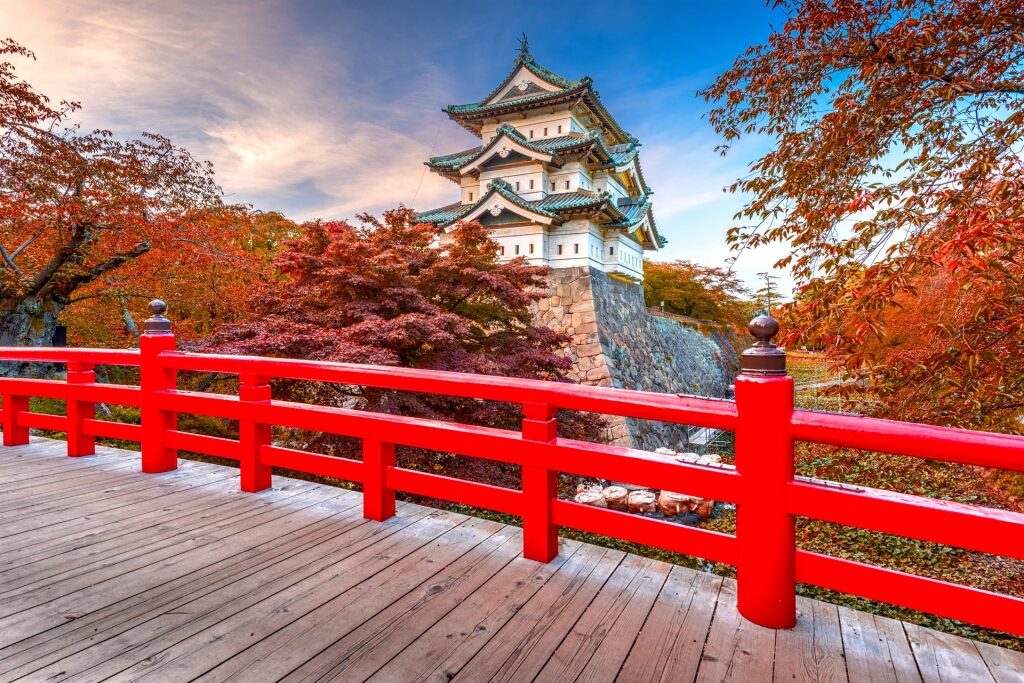
Hirosaki Castle, Aomori
This fine—and rare—example of an 18th-century castle has a picturesque setting amid fortified moats and lush woodland in Aomori. Some 2,500 cherry trees fill the grounds, making them one of Japan’s best sakura sights. When the whole landscape is covered with delicate, pale pink blossom, this is without doubt one of the prettiest places in Japan.
The original castle dates to the 17th century but this three-story version was built in 1811. Most Japanese castles were destroyed at the end of the samurai era, or during World War II, but this is a lucky survivor.
Itsukushima Shrine, Hiroshima
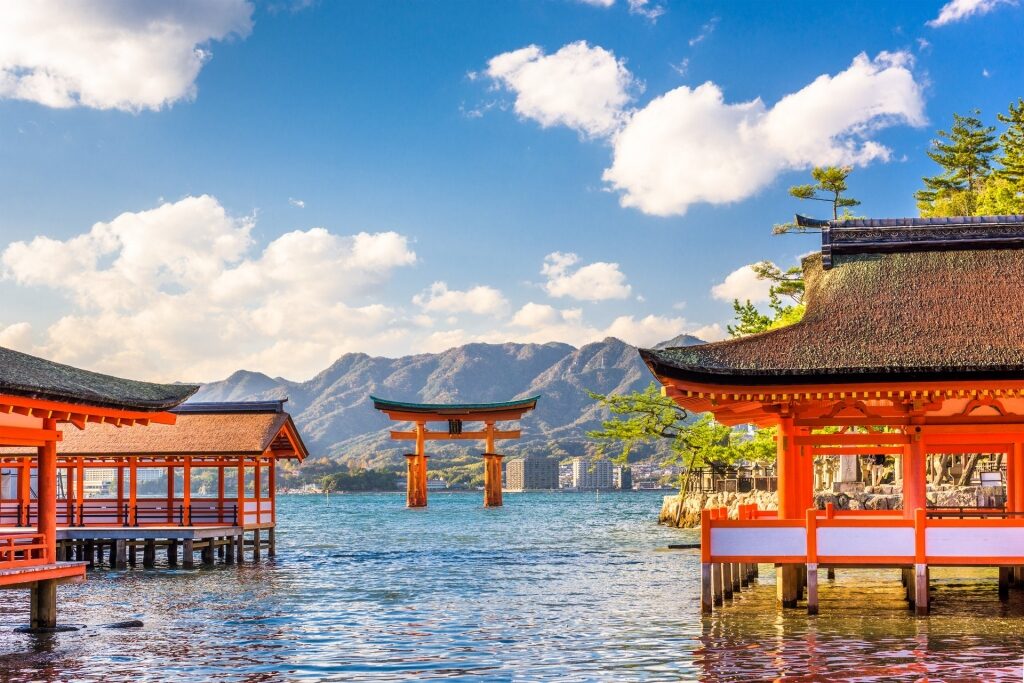
Itsukushima Shrine, Hiroshima
Itsukushima Shrine stands in the sea off Miyajima Island in Hiroshima Bay, built over water to protect its purity. Its scarlet 50-foot tall tori gate is a striking sight, much loved by artists.
You may have seen the Hiroshige woodblock of 1853 in the Minneapolis Institute of Arts, or the snow-covered scene of 1932 by Hasui in the Art Institute of Chicago.
This wonderful shinto shrine is now recognized as a Unesco World Heritage Site. The whole island is also considered one of the three most scenic spots in Japan.
Kintaikyo Bridge, Hiroshima
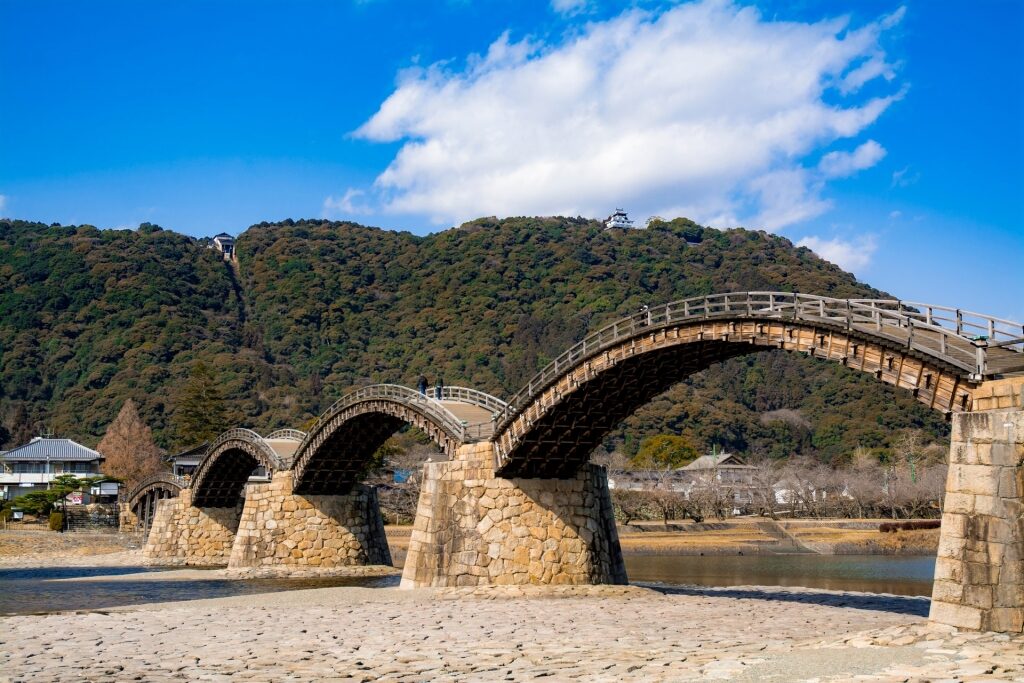
Kintaikyo Bridge, Hiroshima
Rebuilt in the 1950s after a typhoon destroyed the 17th-century original, this wonderful wood bridge spans the Nishiki River in Hiroshima. Although the wood is regularly restored, the piers still use the original stones.
Surrounded by 3,000 cherry trees, it is particularly beautiful during spring and fall. Its traditional design and setting has made the bridge a popular subject for Japanese artists and now for photographers.
Iwakuni Castle stands atop a hill behind the bridge. Well worth a visit in itself, it is also a great vantage point for a scenic overview.
Mount Rokko, Kobe
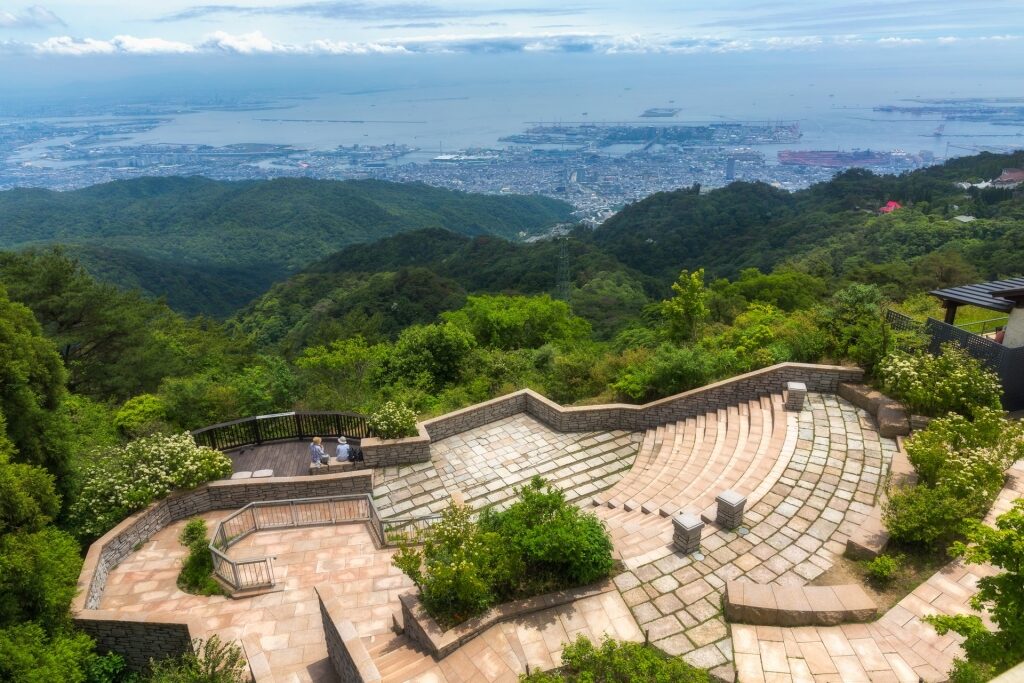
Mount Rokko, Kobe
The mountain towering over Kobe is reached by cable car or bus and delivers amazing views over both Kobe and Osaka. It also has a wonderful Alpine Botanical Garden and Japan’s first golf course, dating to 1903.
Hiking trails allow you to explore the Japanese mountain and discover different views. The vivid sunsets over Osaka Bay are especially beautiful.
The Mount Rokko Tenrandai, or observation platform, is a popular evening destination for its “10 million-dollar view”. Enjoy a craft beer or a snack as you take in the amazing cityscape.
Akashi-Kaikyo Bridge, Kobe
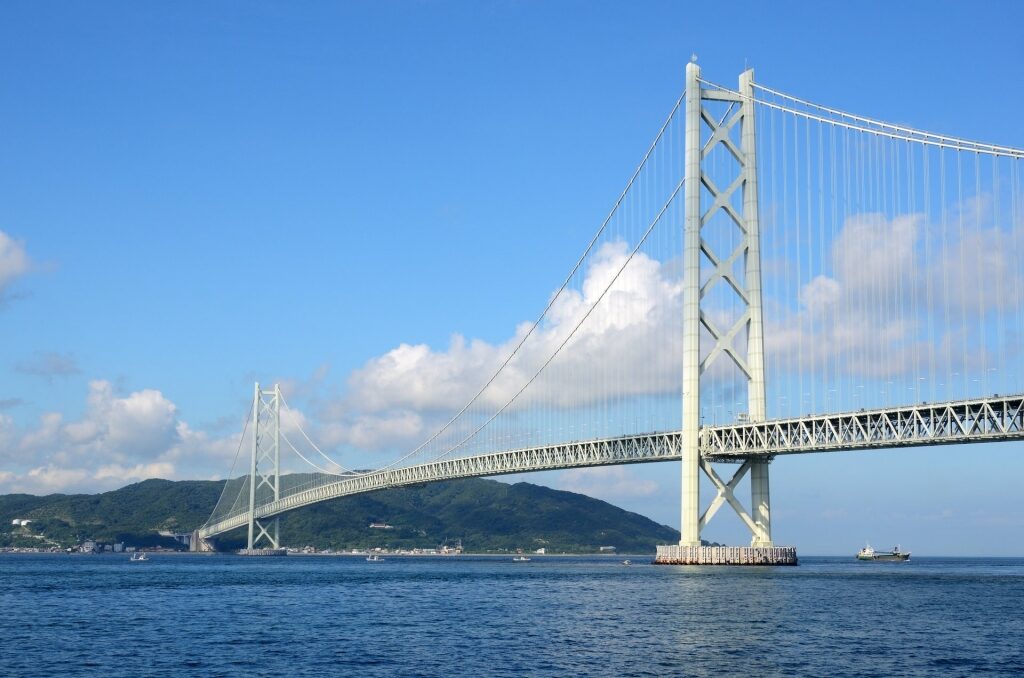
Akashi-Kaikyo Bridge, Kobe
The world’s longest suspension bridge may not fit the classic concept of beauty but it is certainly awesome. And when illuminated at night, or with thousands of lights on special occasions, the 12,831-foot-long Akashi-Kaikyo Bridge becomes something very special indeed.
This graceful bridge was built in 1998 to link Kobe and Awaji Island across the 2 1/2-mile Akashi Strait (Kaikyo means “strait”). Its pair of 1,000-foot-high towers have to withstand earthquakes, fierce winds and strong currents in the strait—and yet the entire structure appears almost fragile from a distance.
Kochi Castle, Kochi
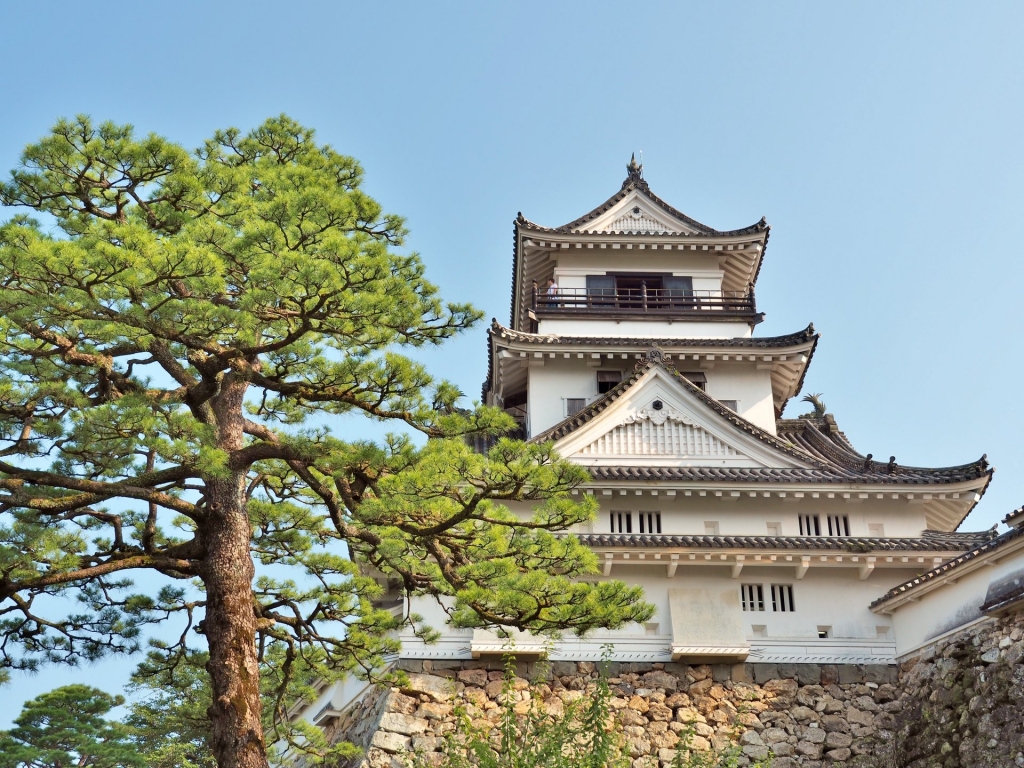
Kochi Castle, Kochi
This five-story castle, dating to 1611 and one of the oldest in Japan, sprawls down a hillside to make what is arguably one of the country’s prettiest sights. During cherry blossom season, its gardens are simply spectacular, frothing with pink blossoms, framing the castle’s white facade and delicate gray roof.
Only 12 such castles survived the turmoil of the post-feudal period, so Kochi is very special and worth seeing for its historic interest as well as its beauty. What’s also unique is the fact that the central tower was also a residence. Today, you can climb to the top for great views over the city.
Dejima, Nagasaki
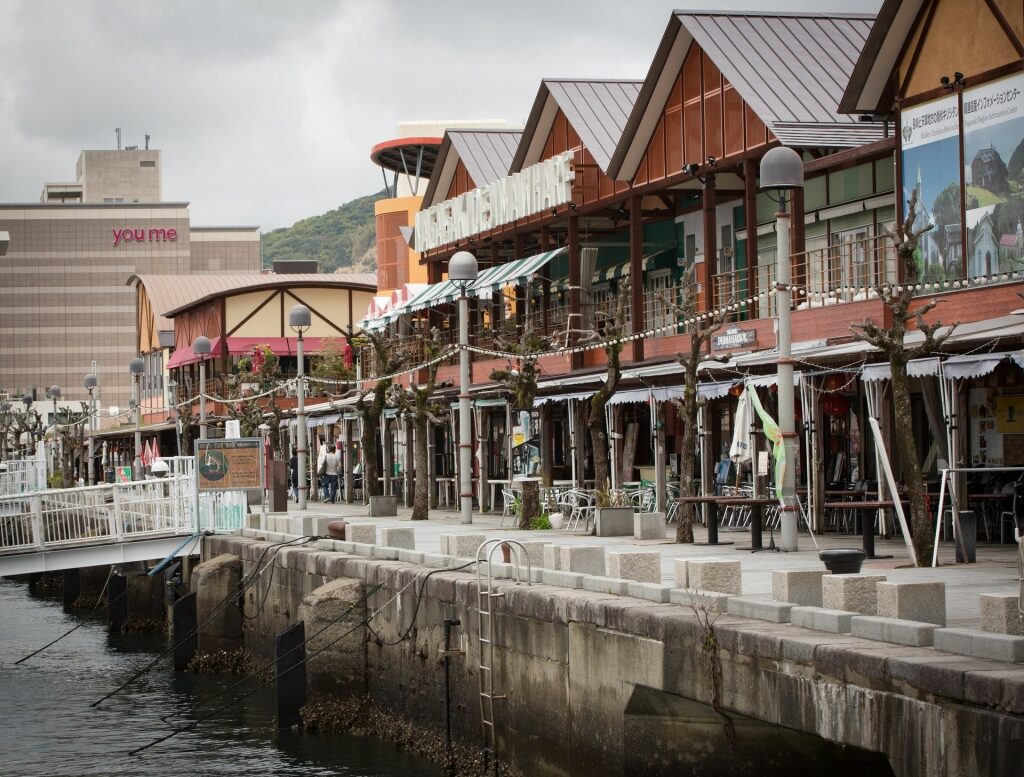
Dejima, Nagasaki
Originally an artificial island in the port of Nagasaki, Dejima was built in 1636 to isolate Portuguese traders from the rest of Japan. Until 1843, it was the only place in Japan where any foreigner could live or do business.
Restored to that Edo Era appearance, the island is now a living museum, carefully reconstructed. Visiting here is one of the best things to do in Nagasaki, where you can hire a traditional costume for an unusual photo op, learn about the development of trade in Japan, or just enjoy a sunset from a cafe or restaurant on Dejima Wharf.
Senganen Garden, Kagoshima
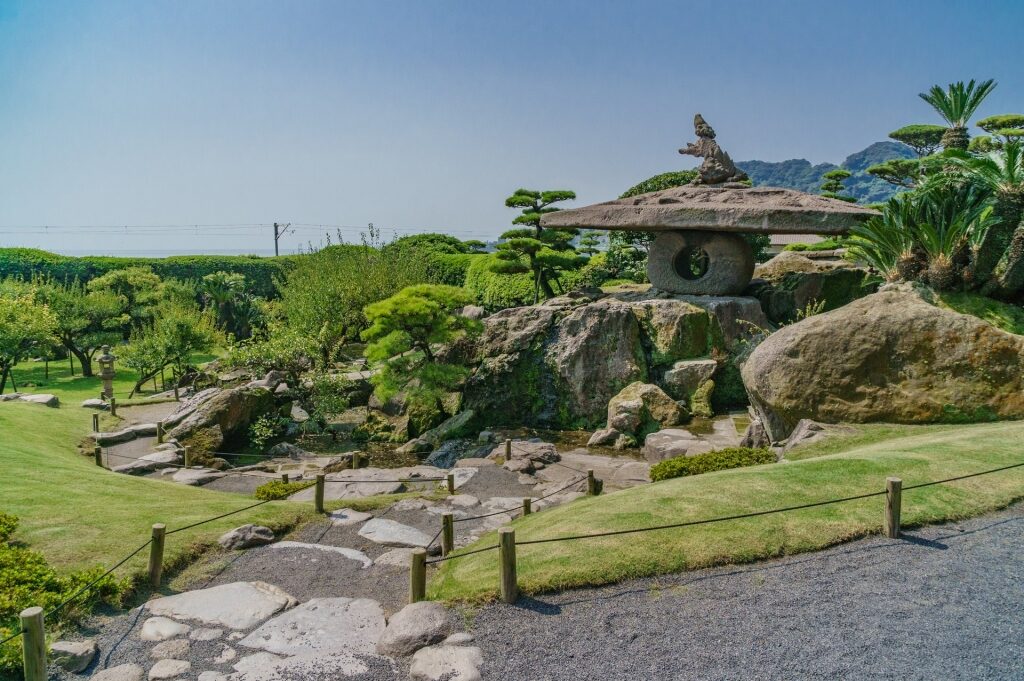
Senganen Garden, Kagoshima
These 400-year-old gardens are one of Japan’s finest. Add in the backdrop of Kagoshima Bay, with an active volcano, and you have a special sight indeed.
The house at the center, once home to a feudal lord, is a fascinating mix of Japanese, Europeans and Chinese influences. It dates to a time when Japan was first opening itself up to the outside world in the 19th century.
A pretty tea room and restaurant with local delicacies completes any visit to the garden, which covers 12 acres.
